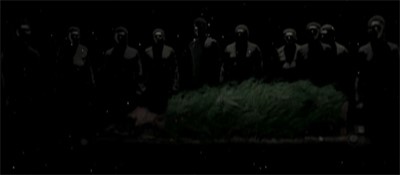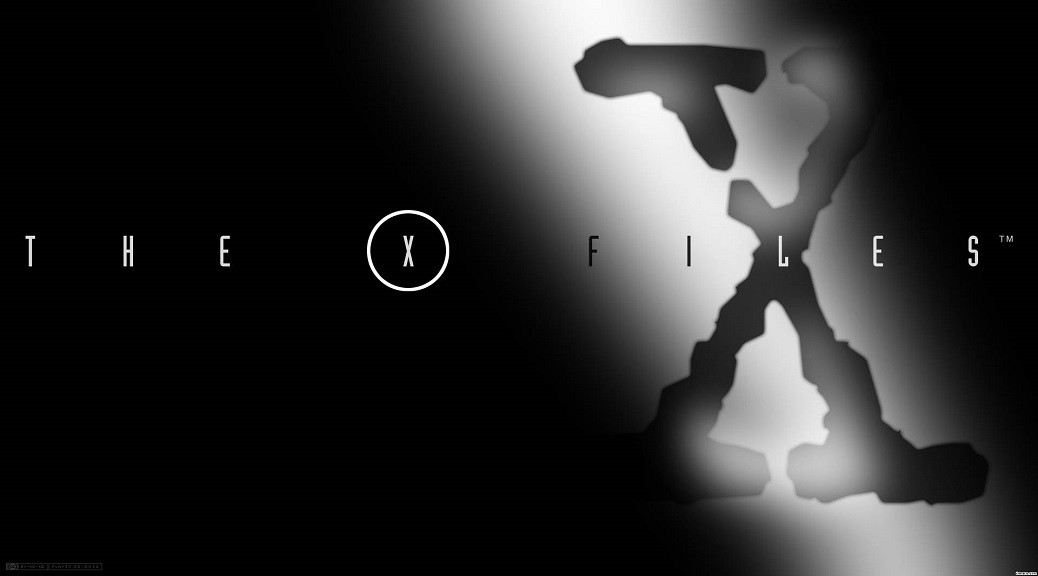The reviews of episodes of The X-Files done by both Max at Apt. 42 Revisited and Darren at The M0vie Blog are almost as good as watching the episode’s themselves, each for their own reason. Darren’s reviews are well researched thesis-like essays that are a pleasure to plunge into. I have to admit that my X-Files Facebook Project is still not going as well as anticipated, and that I am stuck in the middle of Season 2; but I decided to move along to Season 3 when it came to this month’s featured The M0vie Blog X-Files review.
The M0vie Blog’s Review of The X-Files, Season 3, Episode 1: ‘The Blessing Way’
The Blessing Way is the first mythology episode of The X-Files that doesn’t really work.
And it doesn’t really work for a lot of the same reasons that some of the later mythology episodes don’t really work. Its pacing is terrible. It wallows in new age mysticism, allocating characters thoughtful monologues that awkwardly state themes and render subtext as supratext. It plays into the deification of Mulder, trying to bend Mulder’s story to fit into an archetypal “chosen one” narrative. More than that, it is very clearly a holding pattern, an effort to eat up time without moving forward.
 However, despite the fact that The Blessing Way really doesn’t work, it is still a fascinating episode. It’s a wonderful demonstration of how The X-Files has developed a fleshed-out world inhabited by compelling characters. The best moments in The Blessing Way are character-focused, with Skinner caught between his duty to the government and his loyalty to his agents, the Cigarette-Smoking Man revealed to be middle-management at best, and the implication that even vast sinister government conspiracies are hostage to chaos.
However, despite the fact that The Blessing Way really doesn’t work, it is still a fascinating episode. It’s a wonderful demonstration of how The X-Files has developed a fleshed-out world inhabited by compelling characters. The best moments in The Blessing Way are character-focused, with Skinner caught between his duty to the government and his loyalty to his agents, the Cigarette-Smoking Man revealed to be middle-management at best, and the implication that even vast sinister government conspiracies are hostage to chaos.
The Blessing Way is an oddity, a rather strange piece of television that is almost endearing in its stubborn refusal to deliver what the audience wants and expects. That doesn’t make it good, but it does make it interesting.
 It’s hard to imagine how casual viewers must have reacted to The Blessing Way. The second season had seen The X-Files climbing in popularity, and the summer hiatus had allowed the show to percolate in the public consciousness. The audience for The Blessing Way jumped by over two million households from Anasazi. The estimated number of total viewers almost doubled in the gap between Anasazi and The Blessing Way. One wonders how these viewers responded to long-winded monologues and new age mysticism. (Kevin Smith did not react well.)
It’s hard to imagine how casual viewers must have reacted to The Blessing Way. The second season had seen The X-Files climbing in popularity, and the summer hiatus had allowed the show to percolate in the public consciousness. The audience for The Blessing Way jumped by over two million households from Anasazi. The estimated number of total viewers almost doubled in the gap between Anasazi and The Blessing Way. One wonders how these viewers responded to long-winded monologues and new age mysticism. (Kevin Smith did not react well.)
There’s something rather bold about all this. The second season of The X-Files had opened with Little Green Men, a show that was practically a second pilot for the series. It was very welcoming for new viewers. In contrast, The Blessing Way opened the third season with a completely atypical episode of The X-Files that felt consciously at odds with what had made the show such a cult hit. There was minimal action, fleeting glimpses of aliens, and lots of waxing lyrical about death and dying.
 In many respects, this was a very gutsy move for The X-Files. It was clearly a story that Chris Carter wanted to tell, even if it may not have been the perfect way to open the third season. In many respects, the third season is about The X-Files running with the stuff that worked in the second season, and getting even better at it. As such, The Blessing Way stands out as something of an oddity in light of both what came before and what came after. The show wouldn’t get this abstract and philosophical again until the sixth season or so.
In many respects, this was a very gutsy move for The X-Files. It was clearly a story that Chris Carter wanted to tell, even if it may not have been the perfect way to open the third season. In many respects, the third season is about The X-Files running with the stuff that worked in the second season, and getting even better at it. As such, The Blessing Way stands out as something of an oddity in light of both what came before and what came after. The show wouldn’t get this abstract and philosophical again until the sixth season or so.
One of the more intriguing features about The Blessing Way is that it steadfastly refuses to give the viewer what they expect going into it. Anasazi and Paper Clip fit together quite well, but The Blessing Way seems intentionally awkward. It is not the episode that anybody watching Anasazi would expect. Watching the episodes back-to-back is something of a dissonant experience, to the point where the cliffhanger from Anasazi seems to completely disappear.
 While Anasazi itself was layered with symbolism and thematic subtext, the cliffhanger ending the second season was remarkably straight forward. The Cigarette-Smoking Man had just ordered the destruction of the box car where Mulder was hiding. As much as Anasazi had torn The X-Files apart so that something new might be built on the foundation, the cliffhanger bridging the season was relatively straightforward: how would Mulder get out of the box car?
While Anasazi itself was layered with symbolism and thematic subtext, the cliffhanger ending the second season was remarkably straight forward. The Cigarette-Smoking Man had just ordered the destruction of the box car where Mulder was hiding. As much as Anasazi had torn The X-Files apart so that something new might be built on the foundation, the cliffhanger bridging the season was relatively straightforward: how would Mulder get out of the box car?
In a way, it’s a surprisingly simple cliffhanger. It isn’t as “big” or as “earth-shattering” as the revelation that the X-files were closed down back in The Erlenmeyer Flask. It’s not a moment that changes the whole meaning of the show. It isn’t a question that demands a significant block of the season, or even a significant block of the next episode, to answer. It’s a plot point that could, rather easily, be answered in the teaser to The Blessing Way.

